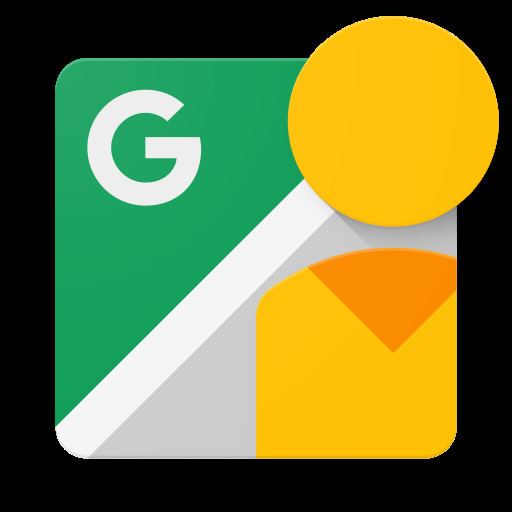Available in Multiple languages | Website Google Street View | |
 | ||
Initial release May 25, 2007; 9 years ago (2007-05-25) Stable release Release 213 (see list) / March 15, 2017; 1 day ago (2017-03-15) | ||
Google Street View is a technology featured in Google Maps and Google Earth that provides panoramic views from positions along many streets in the world. It was launched in 2007 in several cities in the United States, and has since expanded to include cities and rural areas worldwide. Streets with Street View imagery available are shown as blue lines on Google Maps.
Contents
- History and features
- Implementation
- Data capturing equipment
- Pegman
- Privacy concerns
- Third party use of images
- Coverage
- References
Google Street View displays panoramas of stitched images. Most photography is done by car, but some is done by trekker, tricycle, walking, boat, snowmobile, and underwater apparatus.
History and features
Street View had its inception in 2001 with The Stanford CityBlock Project, a Google-sponsored Stanford University research project. The project ended in June 2006, and its technology was folded into StreetView.
Implementation
Street View is available as a component of Google Maps, as a web application, and as a mobile application for Android and iOS. Originally, Google Maps used Adobe Flash for Street View. Google overhauled Google Maps in 2013. The newer version uses JavaScript extensively and provides a JavaScript application programming interface. At the time of their release, the new Google Maps and Street View are measured slower than the old version in various setups. A user can switch to the old version of Google Maps, which is especially useful when Google Maps is more sluggish than usual.
Data capturing equipment
Pegman
As noted above, the drag-and-drop Pegman icon is the primary user interface element used by Google to connect Maps to Street View. His name comes from his resemblance to a clothespeg. When not in use, Pegman sits atop the Google Maps zoom controls. Occasionally Pegman "dresses up" for special events or is joined by peg friends in Google Maps. When dragged into Street View near Area 51, he becomes a flying saucer. When viewing older views, the Pegman in the minimap changes to Doc Brown from Back to the Future.
Pegman has occasionally appeared as a costumed character at Google events, such as the launch of Street View in France in 2008.
Privacy concerns
Google Street View will blur houses for any user who makes a request, in addition to the automatic blurring of faces and licence plates. Privacy advocates have objected to the Google Street View, pointing to views found to show men leaving strip clubs, protesters at an abortion clinic, sunbathers in bikinis, and people engaging in activities visible from public property in which they do not wish to be seen publicly. Another concern is the height of the cameras, and in at least two countries, Japan and Switzerland, Google has had to lower the height of its cameras so as to not peer over fences and hedges. The service also allows users themselves to flag inappropriate or sensitive imagery for Google to review and remove. Police Scotland received an apology for wasting police time in 2014 from a local business owner in Edinburgh who in 2012 had staged a fake murder for the Google camera car by lying in the road "while his colleague stood over him with a pickaxe handle". In May 2010, it was revealed that Google had collected and stored payload data from unencrypted Wi-Fi connections as part of Street View. German authorities are considering legal action while the Foreign Minister said "I will do all I can to prevent it." Australian police have also been ordered to investigate.
The concerns have led to Google not providing or suspending the service in countries around the world.
Third-party use of images
Fine-art photographers have selected images for use in their own work. Although the images may be pixelated, the colours muddy, and the perspective warped, the photographs have been published in book form and exhibited in art galleries, such as the work of Jon Rafman at the Saatchi Gallery, London. In his personal appreciation of Street View material, Rafman sees images which evoke the "gritty urban life" depicted in American street photography and the images commissioned by the Farm Security Administration. He also invokes the "decisive moment" esthetic of Henri Cartier-Bresson "as if I were a photojournalist responding instantaneously to an emerging event".
Michael Wolf won an honourable mention in Daily Life in the 2011 World Press Photo competition for some of his work using Google Street View.
Mishka Henner was short-listed for the 2013 Deutsche Börse Photography Prize in November 2012 for his series 'No Man's Land', which depicts sex workers at rural roadside locations.
Swedish programmer Anton Wallén developed a game called GeoGuessr, which places players into a Google Street View and has them guess its location.
Coverage
In June 2012, Google announced that it has captured 20 petabytes of data for Street View, comprising photos taken along 5 million miles of roads, covering 39 countries and about 3,000 cities. Coverage includes much of North and South America, from Cambridge Bay, Nunavut to Half Moon Island in the South Shetland Islands. Maps also include panoramic views taken under water such as in West Nusa Tenggara underwater coral, in the Grand Canyon, inside museums, and Liwa Desert in United Arab Emirates which are viewed from camelback. In a ten-day trek with Apa Sherpa, Google documented Khumbu, Nepal with its Mount Everest, Sherpa communities, monasteries and schools.
Google also added landmarks in Egypt, including the Pyramids of Giza, Cairo Citadel, Saqqara, Monastery of Saint Mina, and the Citadel of Qaitbay in the 9 September 2014 release.
Many places still have limited or no coverage, including:
